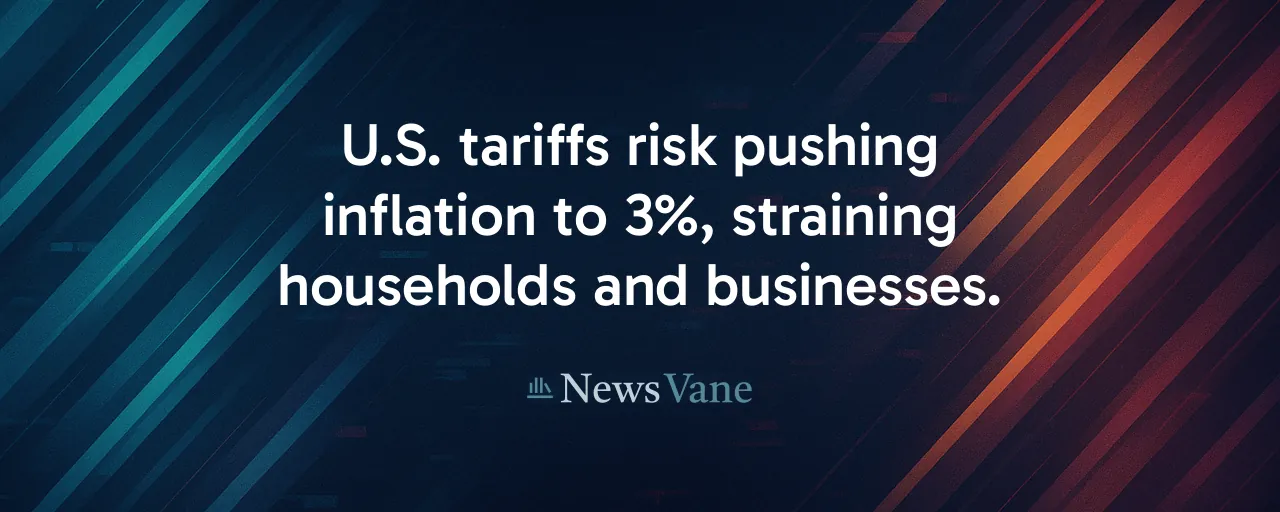Tariffs Stir Economic Uncertainty
A fresh wave of U.S. trade policies, including a 10% tariff on all imports and heavier duties on Chinese goods, has ignited debate about their economic fallout. Treasury Secretary Janet Yellen projects these measures could drive inflation to 3% annually, up from 2.4% in May 2025. For many, the threat of rising prices feels like an unexpected hurdle after years of economic ups and downs.
Tariffs aim to shield American industries by taxing foreign goods, encouraging local production. Yet, their effects ripple far beyond factory floors, influencing grocery budgets and global logistics. Yellen's warning underscores a critical question: will these policies strengthen the economy or burden households with steeper costs?
Families are already noticing higher prices for toys, appliances, and auto parts. Businesses, meanwhile, face supply chain disruptions. The stakes are high, and the outcome hinges on whether tariffs can deliver promised benefits without sparking widespread price increases.
How Tariffs Fuel Price Pressures
History offers clues about tariffs' impact on prices. The Smoot-Hawley Tariff of 1930 raised costs by curbing competition, a pattern echoed today as import-heavy sectors report double-digit price spikes. Falling fuel and apparel costs have tempered overall inflation, but the trend may not hold.
A San Francisco Fed study projects the 2025 tariffs could add 0.6 to 0.8 percentage points to prices by 2026. Surveys show businesses planning to pass on higher costs this summer, suggesting a gradual climb toward Yellen's 3% inflation estimate if tariffs remain in place.
Global disruptions amplify these pressures. Russia's war in Ukraine and Middle East shipping attacks have spiked logistics costs, with Asia-to-U.S. container rates jumping 70% during tariff surges. These factors, paired with tariffs, create a challenging environment for keeping prices stable, especially for electronics and energy-dependent goods.
Weighing the Arguments
Advocates for tariffs, including some Republican lawmakers, argue they bolster domestic manufacturing and job creation. They cite stable consumer prices in early 2025 as evidence that inflationary fears may be overstated, suggesting foreign producers might absorb some tariff costs.
Economists from institutions like the University of Chicago counter that tariffs function as a tax, hitting lower-income households hardest. They estimate families could face $1,000 to $2,000 in annual costs, with businesses planning price hikes or supplier changes that could fuel inflation. These analysts push for targeted investments over broad duties.
Each side has merit. Tariffs may protect certain industries, but cases like the 2018 washing-machine tariff, which raised prices 12%, show consumers often pay the price. Balancing immediate gains with long-term stability remains the core challenge.
Lessons From the Past, Eyes on the Future
Global trade tensions are nothing new. The IMF forecasts world inflation easing to 4.4% in 2025, but trade barriers and geopolitical risks could keep prices elevated. Events like the 1973 OPEC embargo and the 2018 U.S.-China trade war highlight how protectionism drives costs. Historical tariffs offer mixed lessons. The McKinley Tariff of the 1890s aided industry but raised consumer prices. The 2002 steel tariffs saved jobs yet hurt downstream sectors. These examples suggest tariffs can deliver targeted benefits but often at a broader economic cost.
Navigating the Road Ahead
The Federal Reserve faces a complex task. Its rate hikes from 2022 to 2023 curbed demand-driven inflation, but tariffs create supply-side pressures that are harder to control. With rates at 4.25–4.5% and inflation expectations at 2.6%, the Fed is vigilant for signs of escalating prices.
Consumers face real risks. Higher costs could strain budgets, particularly for low-income families reliant on imported goods. Businesses are shifting supply chains to nations like Mexico and Vietnam, but these adjustments are costly and may not fully mitigate tariff effects.
As the U.S. tests this tariff strategy, the global economy watches closely. Will these policies reshape trade for the better, or will they trigger higher prices and slower growth? The answers remain uncertain, but the conversation is just beginning.
